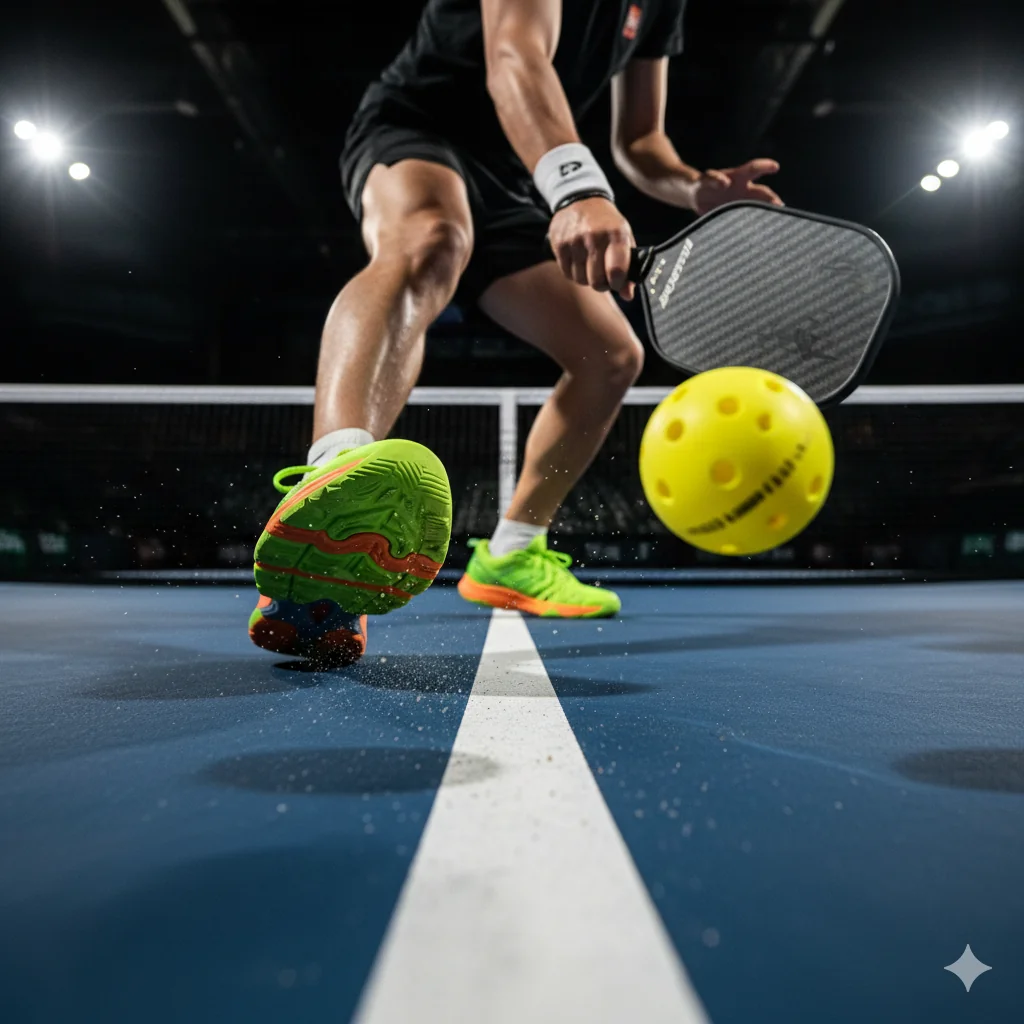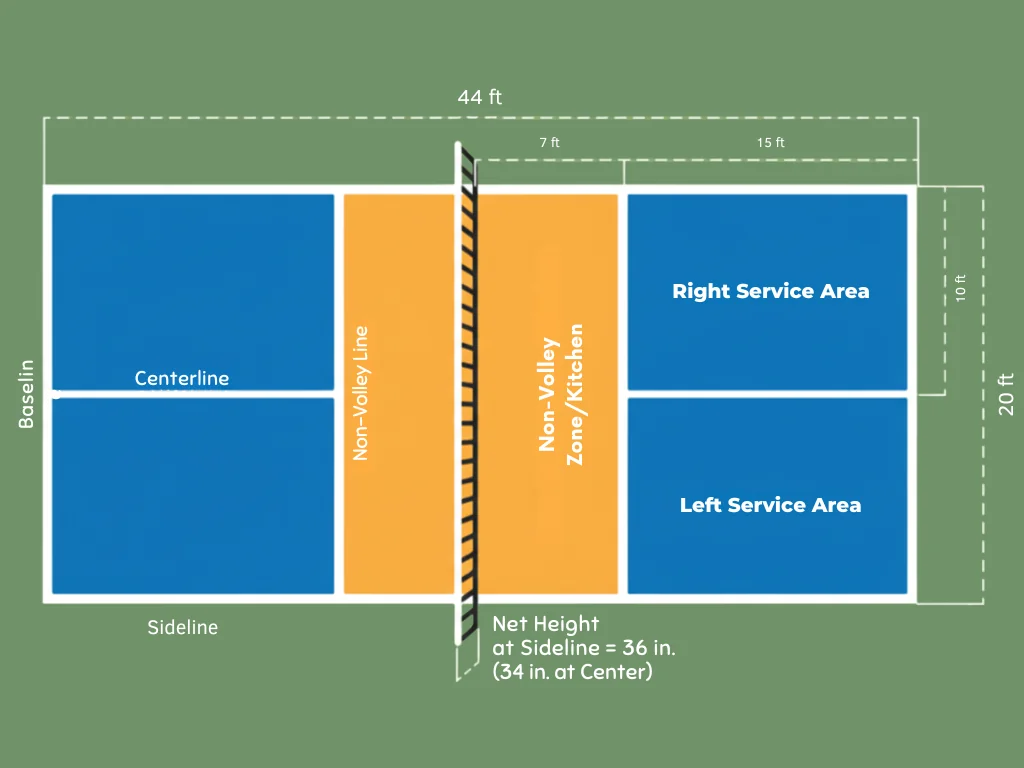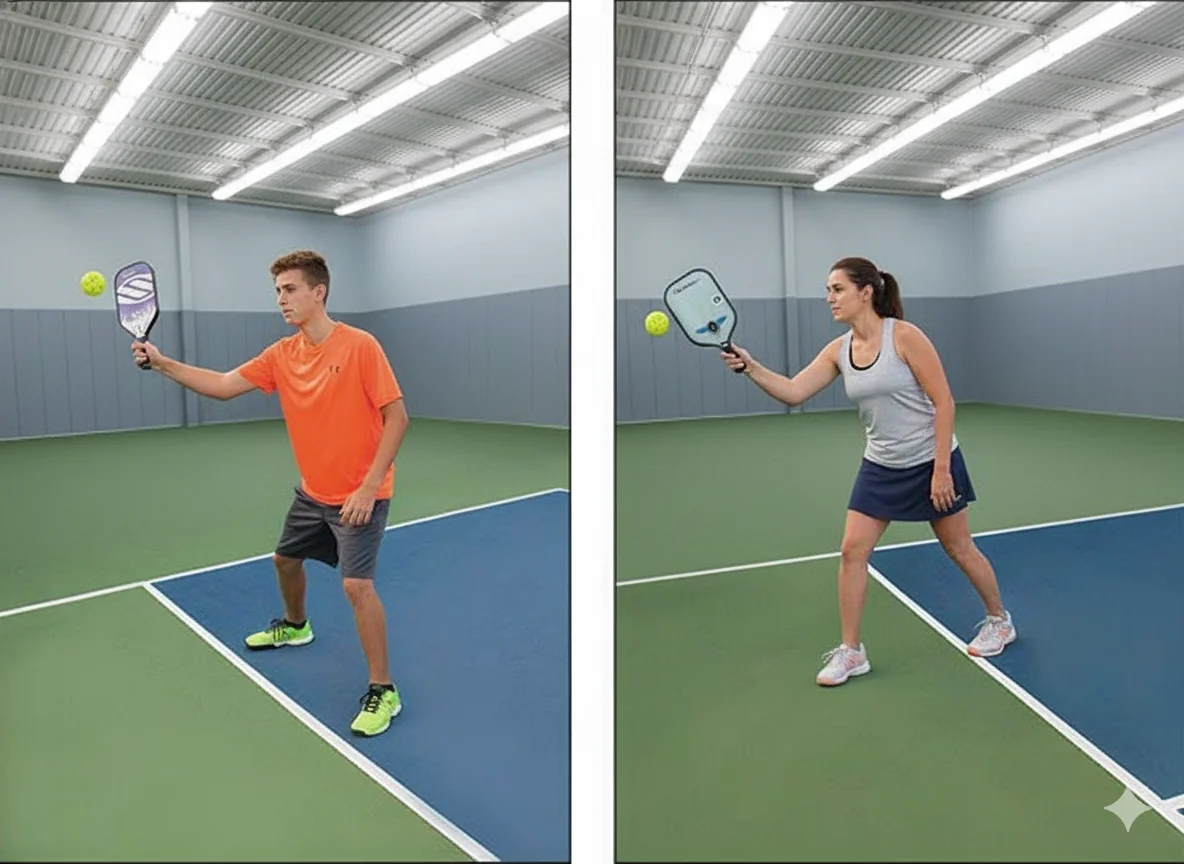The Definitive Guide to Pickleball Kitchen Rules (The Non-Volley Zone)

The 'kitchen' is one of the most misunderstood areas on the pickleball court, but mastering its rules is the key to unlocking a higher level of play. Officially known as the Non-Volley Zone (NVZ), this 7-foot area on each side of the net governs a huge part of the game's strategy. This guide will break down the pickleball kitchen rules in simple terms, explaining everything from basic faults to advanced momentum plays. Whether you're a beginner or a seasoned player, you'll learn how to avoid faults and use the kitchen to your advantage.
What is the main pickleball kitchen rule?
The primary kitchen rule in pickleball is that you cannot hit a volley (hitting the ball out of the air) while any part of your body is touching the Non-Volley Zone. This includes the line itself. Your momentum from a volley also cannot carry you into the kitchen.
In This Guide
What is the Pickleball Kitchen (Non-Volley Zone)?
Before diving into the rules, let's define the space.
- The Kitchen: This is the common slang term for the Non-Volley Zone (NVZ).
- Dimensions: It's the 7-foot area on both sides of the net, extending from sideline to sideline. The line marking the zone is considered part of the kitchen.
- Purpose: The kitchen's purpose is to prevent players from standing at the net and smashing every ball. It promotes a more strategic game involving dinks, drops, and thoughtful shot placement.
Understanding the purpose of the kitchen rule in pickleball is the first step to mastering it. It's not just a restriction; it's what makes the soft game and net play so crucial.

The Non-Volley Zone (Kitchen) extends 7 feet from the net on both sides of the court. The lines are part of the zone.
The Core Rule: No Volleying in the Kitchen
This is the golden rule. A 'volley' is hitting the ball before it bounces. You commit a fault if you, or anything you are wearing or carrying, touches the Non-Volley Zone during the act of volleying the ball.
This includes:
- Your feet touching the kitchen line or the area inside it.
- Your paddle touching the surface of the kitchen after hitting a volley.
- Your hat, sunglasses, or even a paddle strap falling into the kitchen during your volley motion.
Once the volley is complete, any subsequent action (like your momentum carrying you in) is also governed by the kitchen rules.

A player must establish foot position outside the Non-Volley Zone before making contact with the ball for a legal volley.
When Can You Legally Enter the Kitchen?
This is a common point of confusion. You are allowed to be in the kitchen at any time, with one huge exception: you cannot be there to hit a volley.
So, when is it okay to step into the kitchen?
You can enter the kitchen to hit any ball that has already bounced.
This is the most common reason to go into the kitchen—to return a short shot, often called a 'dink,' that has landed in the zone. After you hit the bounced ball, you can stay in the kitchen to prepare for the next shot. However, you must re-establish your position outside the kitchen before you can hit your next shot if it is a volley.
The Momentum Rule: A Critical Detail
This is where many intermediate players get tripped up. The pickleball kitchen rules about the kitchen extend even after you've made contact with the ball.
The Rule: If you hit a legal volley from outside the kitchen, the force or momentum from your swing cannot cause you to touch the kitchen or the kitchen line. If it does, it's a fault.
Imagine hitting a powerful overhead smash just behind the kitchen line. You hit the ball legally, but your follow-through causes you to stumble forward and step on the line. This is a fault.
To be safe, you must maintain complete balance and control throughout your entire volley motion until the ball is dead.
Official USA Pickleball Rule (9.B)
It is a fault if the player touches the non-volley zone, including the line, during the act of volleying the ball. The act of volleying includes the swing, the contact with the ball, and the momentum from the action, which is concluded when the player has regained balance and control.
Partner Assistance
Your partner cannot touch you to prevent you from falling into the kitchen during a volley. However, they can grab you after you have completed your volley motion and regained balance to prevent you from falling.
Frequently Asked Kitchen Questions
Can my paddle cross the kitchen line if my feet are outside?
Yes. The rule applies to your body (or anything you're wearing). Your paddle can cross the plane of the kitchen line in the air to hit a volley, as long as your feet remain outside the NVZ and you don't touch the ground inside the kitchen with your paddle.
What if the ball bounces on the kitchen line?
If a serve or any other shot lands on the Non-Volley Zone line, it is considered 'in' the kitchen. Therefore, you must let it bounce before you can step in to hit it.
Can I jump over the kitchen to hit a volley?
This is a legal but very advanced play known as an 'Erne'. You can jump from outside the kitchen, over the side corner of the NVZ, hit a volley in the air, and land legally outside the court. Your feet cannot touch the kitchen at any point during this action.